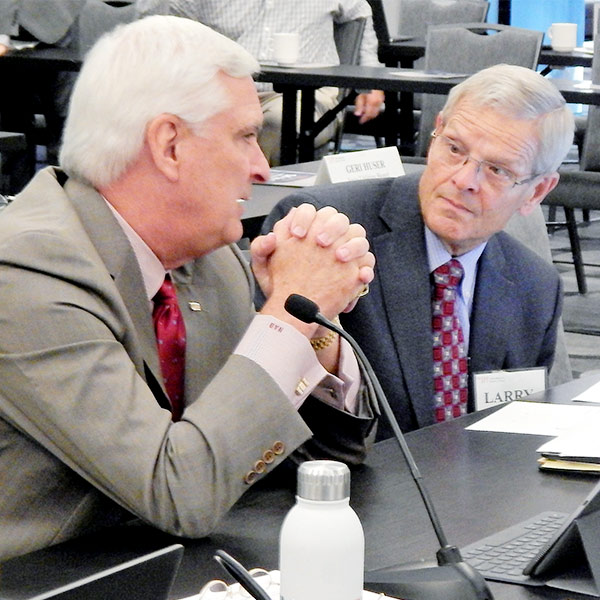By Christen Smith
A new study has concluded that PJM’s proposed 10-hour rule for energy storage resources (ESRs) participating in the capacity market is “unnecessary and unduly restrictive.”
Astrapé Consulting released the analysis July 15 — funded by the Energy Storage Association and the Natural Resources Defense Council — that backs up claims from critics that PJM’s plan for integrating ESRs by mandating a 10-hour continuous runtime in order to collect their full share of capacity payments will inhibit participation and make the grid’s renewables expansion more difficult.
“Storage is a key technology enabling a low-carbon grid,” Tom Rutigliano, a senior advocate with NRDC’s Sustainable FERC Project, said in a July 15 news release. “This study agrees with many others in showing that batteries are an effective replacement for power plants. It also underscores the importance of FERC’s commitment to ensuring that rules developed for older technologies do not become barriers to storage.”

| IPL
All six jurisdictional RTOs and ISOs are facing a December deadline for compliance with FERC Order 841, which requires them to revise their market participation models to allow storage resources 100 kW and larger to provide capacity, energy and ancillary services within their technical capability.
Earthjustice attorney Kim Smaczniak told RTO Insider in April that FERC’s request for more information on PJM’s storage rules — particularly whether a “capacity storage resource” is included in the definition of a “generation capacity resource” and whether one unit can serve as both — suggests the commission is “pushing back” on the 10-hour requirement. (See FERC Asks RTOs for More Details on Storage Rules.)
It’s not yet clear how or when FERC will rule on the compliance filing, but some critics suggest an approved 10-hour rule could spur additional legal challenges.
Rutigliano told RTO Insider he couldn’t comment on whether NRDC would be part of that battle but hoped the study results would encourage PJM to reconsider.
“We would certainly be open to PJM asking FERC to hold off for a few months so this could go back through the stakeholder process,” he said.
PJM’s 10-hour rule remains the highest requirement proposed among RTOs/ISOs (ER19-469). ISO-NE sought only a two-hour minimum, while NYISO proposed four. PJM says the runtime corresponds with existing reliability standards, noting that it must “remain impartial in administering the markets.”
“This requires a common set of standards that provide a level playing field for all resources to fairly compete,” PJM spokesperson Jeff Shields said.
‘Different Needs at Different Times’
Except, critics argue, the 10-hour rule is anything but impartial.
“The purpose of the capacity market is to ensure reliability, not subsidize generation,” Rutigliano said. “PJM’s claims that it needs to purchase baseload capacity to meet very rare peak loads defies engineering reality and wastes ratepayers’ money. If the capacity market is unable to recognize the reliability value of different technologies, that shows the need for market reform rather than providing any justification for discounting storage.”
Astrapé’s results show that energy storage deployments of up to 4,000 MW with just four hours of duration can provide full capacity value relative to a resource without time constraints. Similarly, ESR deployments up to 8,000 MW with six-hour runtimes can replace traditional generation sources megawatt-for-megawatt with no impacts on reliability, the study concluded.
“The grid has different needs at different times,” Rutigliano said. “PJM ignores that and says every plant needs to be a peaker.”
PJM, however, said the study rehashes old points and suggests the organization should create an “unduly discriminatory” standard that lowers the bar for some resources and not others. It further points out that its proposal is based on a FERC-approved capacity construct and would spur innovation, not stifle it.
“Having longer duration requirements could encourage developers to make longer-lasting batteries,” Shields said. “We saw the demand response industry find innovative ways to meet our standards and compete in the market, for instance.”
The study further suggests that a 10-hour requirement ignores the historical reality of PJM’s systemwide performance assessment periods. Since 2011, only one event lasted beyond six hours: a primary reserve warning Jan. 7, 2014, that was triggered by the polar vortex, lack of access to firm fuel and other forced outages that rendered 40 GW unavailable. Astrapé notes that these issues would not trigger battery outages and that “a system with more homogeneous resources is more susceptible to these coincident issues than one which contains more heterogeneous resources with different categories of constraints.”
“While caution is warranted in using historical data to justify duration requirements since the system will be evolving, the primary takeaway is that the duration of reliability concern does not necessarily match the shape of the load,” the study reads.
PJM noted that while Astrapé’s conclusions are potentially “worthy of future analysis,” they are “not based on an approach approved by the commission.”


